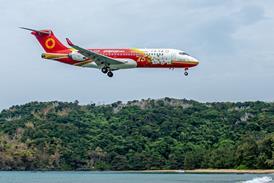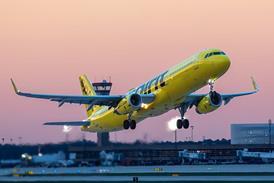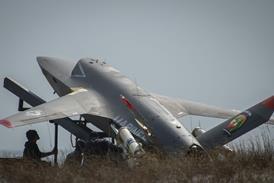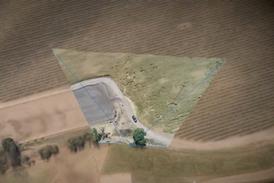Traditional methods for assuring flight safety and aviation security are to be scrutinised because many of the assumptions that underpin them are out of date, putting both in need of a radical review.
Current airline pilot recurrent training exercises are recognised as increasingly irrelevant as aircraft engines and systems become simultaneously more complex and less prone to simple failure. At the same time, aircraft are increasingly managed by automatic systems.
Gunther Matschigg, the International Air Transport Association's senior vice-president safety, operations and infrastructure, says constantly drilling for malfunctions that never occur nowadays will be replaced gradually by performance-based training, with needs assessed locally according to airline operational data and more widely from pooled data.
AB-INITIO TRAINING
At the same time, ab-initio training for the new multi-crew pilot licence (MPL) rather than the traditional commercial pilot licence is looking more appealing to more and more airlines around the world. There are signs that the MPL will become more popular when the current pilot surplus becomes a shortage. The latter will not require a full airline activity recovery to happen, because pilot retirements and continuing fleet growth create a shortage even during a recession.
 |
|---|
© Rex Features |
But with high fleet and traffic growth in Asia and Asia-Pacific, and the MPL initiated by two Chinese carriers, this mode of specialist training, which delivers a pilot to the right-hand seat fully type-rated and drilled in the employing airline's standard operating procedures, is likely to proliferate.
Several airlines in Europe are training some of their pilots under MPL, some under CPL, and the UK saw its first six MPL licences issued in November.
Meanwhile, during 2010 the flight safety performance difference between IATA member airlines and "the rest of the world" has increased dramatically. Measured by hull-loss accident rates, IATA member carriers have always demonstrated a higher quality of flight safety performance than the world average, but the difference, although significant, has not been great. In 2010 it suddenly became huge, and with IATA's still relatively new compulsory quality assurance systems maturing and developing, that gap may widen even further. The 2010 figures at 30 November showed the world average as 0.66 Western-built jet hull-losses per million departures - which is good - but for IATA member carriers, the figure was 0.28 hull-losses per million departures - more than twice as safe.
SAFETY AS AN ASSET
If the gap does widen, the IATA mark next to an airline logo will become a saleable asset. Airlines have always been reluctant to sell safety before, but now the system might do it for them. They will not need to market it.
Security at airports, as passengers experience it, will not change in 2011, but there is a broadening recognition that the basic methods employed for screening passengers and their bags has not changed for 40 years, says IATA, even if individual items of technology have become more effective.
This must change, says Kenneth Dunlap, IATA's director of security and travel facilitation. The philosophy should change from looking for "bad objects" to identifying "bad people". IATA stresses it is not recommending passenger profiling, but a mix of intelligence input, passenger data and behavioural monitoring that identifies the level of risk passengers pose, so as to stream them through an appropriate level of checks, rather than pushing everyone through a system that assumes all passengers are potential terrorists.
Eventually, using future technology, Dunlap's vision is that passengers will be identified by fingerprint or by facial-recognition technology plus a scan of their digital passport when they move from landside to airside, and they will then pass, with their bags, through a passage incorporating multiple scanners/detection systems. In this way, the individual and bags will have been scanned without needing them even to stop walking.
Meanwhile, IATA recognises that recent investment in new scanners means existing technology will remain in use, but a transition system combining the smarter intelligence and personal recognition technologies with selective streaming through existing scanning systems could raise passenger processing rates without needing expensive new equipment.
A demonstration of selected new security ideas sponsored by the UK Home Office and brought together in December by Thales UK at its headquarters near London Gatwick airport provided a glimpse of the sort of ideas and technology that will turn IATA's vision into reality. It was also a demonstration of the recognition that today's security systems are not sustainable for a future in which world passenger numbers are forecast to double every 15 years.
Source: Flight International























